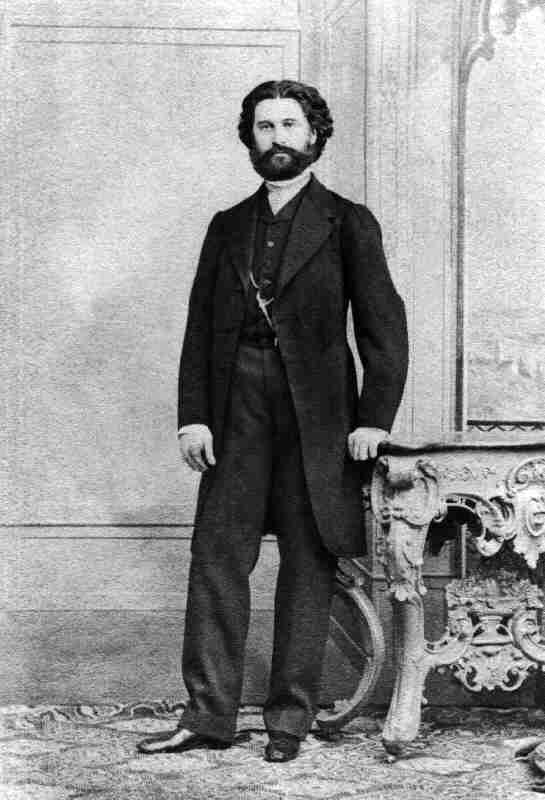Strauss II, Johann (1825–1899)

Johann Strauss II (also known as Johann Strauss the Younger) was an Austrian composer known especially for his waltzes and operettas or light comedies which were very popular with the Viennese public. Son of the composer Johann Strauss I and brother to Josef Strauss and Eduard Strauss, Johann Strauss II is the most famous composer of the Strauss family. The best known of his many famous waltzes is "An der schönen, blauen Donau" ("By the Beautiful Blue Danube"), known popularly as the "Blue Danube".
Early years
Strauss was born in Vienna. His father, a strict disciplinarian, didn't want him to become a musician, but he studied the violin secretly as a child, ironically with his father's first violinist in the Strauss orchestra, Franz Amon. It was only when his father left the family after taking a mistress that Johann, then 17, was able to concentrate fully on a career as a composer.
At the age of 19, Strauss founded his own orchestra, recruiting his members at the Zur Stadt Belgrad tavern, where musicians seeking work could be easily found. His performances with the orchestra were greeted with enthusiasm by audiences that he earned the nickname "the Waltz King".
A growing reputation
Strauss gave concerts throughout the whole of Europe. In Paris he played with his orchestra at a reception in honor of the Emperor Napoleon III. In London he led the promenade concerts in the Covent Garden Theatre. To mark the occasion of the National Peace Jubilee, Strauss was invited to Boston, USA. In the specially built Coliseum for the 50,000 listeners Strauss conducted a 1,000-person orchestra and became the star of the festival.
Strauss composed standing at a lectern, never at the piano. Besides libretti, Strauss did not read books and only occasionally visited theaters, concerts, or opera performances. He preferred to listen to Schrammelmusik (Named after the brothers Johann Schrammel (1850–1893) and Josef Schrammel (1852–1895)) – a style of folk music played in Vienna's wine taverns.
In 1873 to 1874, Strauss wrote Die Fledermaus – a musical drama masterpiece of light entertainment It is the only operetta to be performed at the Vienna State Opera, always at their New Year's concert.
On 22 May 1899, the opera director at the time, Gustav Mahler, allowed Strauss to perform the overture of Die Fledermaus at the State Opera. Just a few days later Strauss died.
Marriages
Strauss was married three times but had no children. His first wife, seven years his senior, was the singer Henrietta Treff, a well-known soprano. Seven weeks after her death he married Angelika Dittrich, 25 years his junior. However, he divorced her after she had an affair with a theater director. His third wife was the young Adele Strauss.
The Blue Danube
When the Vienna Men's Choral Society invited Strauss to write a concert waltz for its ledertafel (choir), he composed his first vocal waltz – "An der schönen, blauen Donau" , Op. 314, ("By the Beautiful Blue Danube"), known as The Blue Danube. In the same year Strauss conducted it at a party thrown by Princess Pauline Metternich at the Austrian Embassy in Paris. From there the waltz started its journey around the whole world. Just a few months after the premiere, this waltz was considered the most stunning of Strauss's compositions and soon became adopted as Vienna's unofficial anthem.
Major works
Die Fledermaus (1874); Der Zigeunerbaron (1885); waltzes, including Morgenblätter (Morning Newspapers, 1864), An der schönen blauen Donau (The Blue Danube, 1867), Geschichten aus dem Winerwald (Tales from the Vienna Woods, 1868), and Wien, Weib und Gesang (Wine, Woman and Song, 1869); polkas, including Tritsch-Tratsch (1858) and Unter Donner und Blitzen (Thunder and Lightning, 1868).


